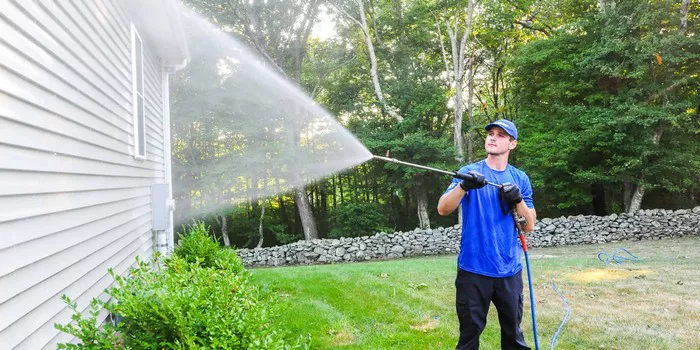Maintaining the exterior of your home not only enhances its curb appeal but also protects it from the elements. Pressure washing is an effective method for cleaning various surfaces, including siding, driveways, and decks. However, determining how often to pressure wash your house depends on several factors, including the climate, the type of siding, and the level of dirt and grime buildup. By understanding these considerations and following a regular maintenance schedule, you can keep your home looking its best while prolonging its lifespan.
Factors Influencing Pressure Washing Frequency
Before establishing a pressure washing schedule, it’s essential to consider several key factors:
1. Climate: Regions with high humidity, frequent rain, or significant pollen counts may require more frequent pressure washing to prevent mold, mildew, and grime buildup.
2. Type of Siding: Different types of siding materials, such as vinyl, wood, brick, or stucco, have varying maintenance needs. For example, vinyl siding typically requires less frequent cleaning compared to wood, which is more prone to mold and mildew.
3. Surrounding Environment: Homes located near trees or in areas with heavy pollution may accumulate dirt and debris more quickly, necessitating more frequent pressure washing.
4. Usage: The frequency of pressure washing may also depend on how often you use outdoor spaces like decks, patios, and driveways. Areas with heavy foot traffic or vehicle use may require more regular cleaning.
Establishing a Pressure Washing Schedule
Once you’ve considered these factors, you can establish a pressure washing schedule tailored to your home’s specific needs. Here are some general guidelines:
1. Annual Cleaning: For most homes, an annual pressure washing is sufficient to remove dirt, grime, and pollutants that accumulate over time. This regular maintenance helps prevent the buildup of mold, mildew, and other contaminants that can damage your home’s exterior surfaces.
2. Semi-Annual Cleaning: In regions with particularly harsh climates or homes with high levels of pollution, semi-annual pressure washing may be necessary. This schedule can help maintain the cleanliness and appearance of your home year-round.
3. As-Needed Basis: Pay attention to signs of dirt, mold, mildew, or other stains on your home’s exterior. If you notice significant buildup between scheduled cleanings, consider performing an additional pressure washing to prevent further damage.
Tips for Effective Pressure Washing
Regardless of how often you choose to pressure wash your house, follow these tips to ensure optimal results:
1. Use the Right Equipment: Invest in a high-quality pressure washer with the appropriate PSI (pounds per square inch) for your home’s siding material. Additionally, use the correct nozzle and cleaning solution to avoid damaging surfaces.
2. Test in an Inconspicuous Area: Before pressure washing the entire surface, test a small area to ensure that the pressure and cleaning solution won’t cause any damage or discoloration.
3. Work from Top to Bottom: Start at the highest point of your home and work your way down to prevent streaking and ensure thorough cleaning.
4. Practice Safety: Wear protective gear, such as goggles and gloves, when operating a pressure washer. Be cautious of electrical outlets and avoid spraying water into them.
5. Consider Professional Help: If you’re unsure about pressure washing or lack the time or equipment, consider hiring a professional service. They have the expertise and tools to clean your home safely and effectively.
Conclusion
Maintaining a clean exterior is essential for preserving the beauty and integrity of your home. By understanding the factors influencing pressure washing frequency and following a regular maintenance schedule, you can keep your home looking its best year-round. Whether you opt for annual, semi-annual, or as-needed cleanings, proper care and attention will ensure that your home’s exterior remains in top condition for years to come.
FAQs
Q1. How do I know if my house needs pressure washing?
A1: If you notice dirt, grime, mold, mildew, or other stains accumulating on your home’s exterior surfaces, it’s likely time for a pressure washing. Additionally, if your home’s appearance has become dull or faded, a thorough cleaning can restore its vibrancy.
Q2. Can pressure washing damage my home’s siding?
A2: While pressure washing is generally safe for most siding materials when done correctly, using excessive pressure or the wrong cleaning solution can cause damage. It’s essential to use the appropriate pressure and cleaning products for your siding type and to test in an inconspicuous area before proceeding with the full cleaning.
Q3. Is it necessary to hire a professional for pressure washing, or can I do it myself?
A3: While pressure washing can be DIY-friendly, hiring a professional service may be advisable, especially if you’re unsure about the process or lack the necessary equipment. Professionals have the expertise to clean your home safely and effectively, reducing the risk of damage to your property.

